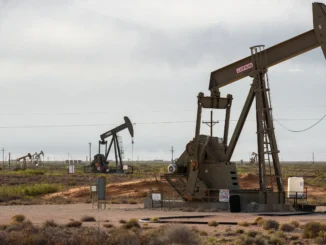Guest “Peak Productivity” by David Middleton
SEPTEMBER 30, 2022Advances in technology led to record new well productivity in the Permian Basin in 2021
The Permian Basin in western Texas and eastern New Mexico is one of the world’s most prolific unconventional oil- and natural gas-producing regions. The Permian Basin has become more productive because of the technological advancements in drilling and completion techniques, which allow operators to economically extract hydrocarbons from the low permeability reservoirs.
The stacked reservoirs of the Permian Basin, and the Delaware and Midland subbasins within it, vary in thickness and depth. Improved geological understanding, known as subsurface delineation, helps operators place wells to optimize well spacing in the most productive areas.
The Permian Basin has produced oil and associated natural gas from vertical wells for decades. Since 2010, advances in hydraulic fracturing and horizontal drilling led to rapid production growth. The number of new horizontal wells increased to 4,524 in 2021, compared with 350 in 2010. In June 2022, the Permian Basin accounted for about 43% of U.S. crude oil production and 17% of U.S. natural gas production (measured as gross withdrawals).
The length of a well’s horizontal section, or lateral, is a key factor in well productivity. In the Permian Basin, average well horizontal length has increased to more than 10,000 feet in the first nine months of 2022, compared with less than 4,000 feet in 2010.
Compared with other U.S. basins, the Permian Basin benefits from lower operational costs, better access to oilfield services, and its proximity to U.S. Gulf Coast refineries and export facilities.
The average productivity of new wells in the Permian Basin has grown for 12 consecutive years. Core areas of the Permian Basin, and its Delaware and Midland subbasins, contain multiple stacked shale formations. By 2021, each new well drilled in the Permian Basin was producing an average of 960 barrels of oil equivalent per day. Our Short-Term Energy Outlook forecasts that Permian production will continue to drive growth in total U.S. crude oil and natural gas production.
Principal contributors: Olga Popova, Gary Long
Tags: natural gas, Texas, liquid fuels, oil/petroleum, states, New Mexico, map
An amazing decade
The data for the EIA maps and graphs came from a Enverus (formerly Drilling Info). The Permian Basin was described as “near infinite resource” in a 2017 Forbes interview of Drilling Info’s founder Allen Gilmer. At the time it was written, the Permian Basin was producing 2.5 million barrels of oil per day (bbl/d), up from 1 million bbl/d in 2011. As of September 2022, it’s producing over 5.3 million bbl/d. Most of the “explosive production growth” occurred after Mr. Gilmer described the Permian Basin as a “near infinite resource”… because that’s what it is.
“We should view the Permian Basin as a permanent resource,” he says, “The Permian is best viewed as a near infinite resource – we will never produce the last drop of economic oil from the Basin.”
According to EIA estimates, the Permian Basin is now producing more than 2.5 million barrels of oil per day (see top chart), which is an annual rate of nearly 1 billion barrels of oil. If Gilmer’s estimate is correct that the Permian Basin holds an additional half a trillion barrels of recoverable oil, that would be a 500-year supply of oil at the current production level, and at 2 trillion barrels, a 2,000 year supply! And if that’s an accurate forecast of Permian Basin reserves, Gilmer’s description of the Permian Basin as a “permanent, near infinite resource” makes perfect sense because the probability is pretty close to zero that we’ll be using fossil fuels even 100 years from now, much less 500 years or 2,000 years in the future.
The major plays of the Permian Basin are “stacked.” Finding stacked pay is like getting a pony for Christmas. Finding stacked plays is like getting a herd of Unicorn ponies for Christmas.
Malthus, Ehrlich and now… Peak Permian



